Wireless wifi router. Smart choice of Wi-Fi router
Every day the number of new users of the world wide web is growing, and the technology of mobile devices and television does not stand still. More and more I want to have constant access to high-speed wireless Internet at home and at work. In this case, so-called WI-FI routers or routers will come to the rescue, allowing you to distribute both wired (LAN) and wireless (Wi-Fi) Internet signal from the provider to computers, smartphones, printers and other equipment.
But how to make the right choice? How not to make a mistake in choosing among the number of various routers on the market, which differ both externally and internally? We will help you understand and understand what kind of device it is and how to use it correctly. And, of course, not to fall for the tricky sellers, who from time to time try to realize an unprofitable, sometimes just stale goods from the shelves of their stores.
Purpose of the router
It’s quite problematic for a beginner to make a choice, because you can easily confuse a Wi-Fi router and an access point, which on the one hand are very similar, but on the other are completely different devices.
A wireless access point (Wireless Access Point) is a base station that provides wireless access to an existing network. Ability to connect and create a wired network is missing. Wireless data transmission in the same way as routers carry out radio waves, which are defined by the standard IEEE 802.11. Routers work exactly on the same wireless standard, but at the same time all of the above have the ability to connect devices to the network using the wired Ethernet standard so that other stationary computers, where there is no Wi-Fi connectivity, have Internet access. So, we figured out what is the difference between a router and an access point. Now you need to understand what the routers themselves are different from each other. After all, their number in the global market is calculated not even by tens, but by hundreds, if not thousands!
You will understand the main difference after you decide which network needs a router to serve. You may need a device either under the connector Rj-45 - the most common Internet connection in Russia, either under ADSL - Internet connection through a telephone cable, often offered by providers simultaneously with TV and telephony. There are also routers that allow you to use mobile phone modem to connect to the Internet via 3G4G modem. And some are equipped with a slot for a SIM-card, which eliminates the need to purchase and connect a separate modem - it is actually built into such a model.
If in the case of the RJ-45 connector, things are quite simple, then when choosing a router for ADSL, you need to make sure that it has a telephone line connector - it is smaller than the traditional WAN connector. If there is no such port on the case, then it is impossible to use such a router to connect to ADSL. To connect a USB modem is necessary, as is easy to guess, a USB 2.0 port or its faster counterpart - USB 3.0. However, there is one important condition! The router must support exactly your model of USB-modem, of which there are now a great many. Some routers have USB on their boards, but they are not equipped with support for connecting modems - this also happens. The connector in this case is used only for connecting external drives (then their contents are available to any other device in the created Wi-Fi network).
We can say that we have decided on the destination. Further attention will be focused on the cost of the device. The price range now varies from 500 rubles (for entry-level models) to 20,000 rubles (for top models). Accordingly, the functionality between them will be very different.
![]()
Photo: otvety-znayki.ru
Main selection criteria
Speed characteristics
The first thing you need to pay attention to is which Wi-Fi standard a router supports. It is denoted as IEEE 802.11n - Be sure to look at the letter at the end of the numbers. In the above example, this is “n” - this letter indicates involvement in one of the most common standards nowadays. Further, your attention should attract such a parameter as the speed of wireless data transmission. It is desirable that it was equal to 300 (Mbitsek) or even reached larger values. The speed depends on the standard Wi-Fi. And you need to understand that the actual bandwidth will always be lower. To translate the value specified in the specifications in our usual megabytes, megabits must be divided by 8. In the case of Wi-Fi 802.11n, the speed is more than enough for you to complete household tasks. A higher-speed standard may be needed only if you have a huge number of gadgets that constantly require a large amount of Internet traffic.
The characteristics of the router must indicate the number and speed of ports. If you want to connect as many devices as possible using them, then their number should be four, and the standard speed should be equal to 10100 (Mbps). One important point, you must understand that to get the real Internet speed, which the provider provides you, you can only get through a wired connection. Some crumbs of the signal will be lost through the air. If the speed provided to you is 100 Mbps, but it will be displayed as 90-95 Mbps, then you should not worry. This is the best you can count on when using a home router. Also, the data transfer speed depends on the skillful setup of the connection itself and the compatibility of your router with the provider.
Well, if the provider gives you access to the Internet at a speed of more than 100 Mbitsek, then it is worth taking a little closer approach to the choice. In this case, it would not hurt you to think about a router that has the following characteristics:
- WI-FI standard IEEE 802.11ac - in this case, the device operates at a frequency of 5 GHz, the bandwidth of this standard starts from 433 Mbit / sec and ends at 6.77 Gbit / s (so far achieved by some manufacturers only experimentally) . Backward compatible with the lower speed 802.11n standard.
- LAN 1000 Mbps - the so-called "gigabitniki." Such high-speed ports are necessary in cases where the information that you are going to transmit via cable is calculated in gigabytes.
Number of external antennas
Next, note how many antennas the device has. In the ideal case, there should be two of them, so that each of them takes up the reception and transmission of data. Then you will not wait for the fall in speed, as is the case with one antenna. Well, if your choice falls on a router with three antennas, then one of them will receive, while others transfer data. Or vice versa, if the load on one of them increases too much. As you understand, the more antennas, the better. Another look at the power of return and reception of the signal, which the manufacturer indicates in the characteristics. Removable antennas with a gain of 5 dBi are ideal.
Ask how many ranges of Wi-fi router works. Of course, if this is just a home router, then you will choose a single-frequency device that operates on the standard 2.4 GHz frequency band (2400 MHz - 2483.5 MHz). If you have flagship smartphones and tablets, then you can think about a dual-band router capable of operating at 2.4 and 5 GHz. Switching between them is carried out, as a rule, in automatic mode. And if there are a lot of antennas on the device, both ranges work simultaneously.
Encryption
Also take care of the security system of your router, and more specifically, what encryption method it supports. This is necessary to protect the network from third-party connections to it. Please note that in addition to popular WEP and WPA present and encryption method WPA2, since client adapters have long supported such an algorithm.
![]()
Photo: static.pleer.ru
Protocol and software
Pay attention to which protocol your ISP provides on the Internet and whether the device you choose supports it. In most cases, preference PPPoE and PPTP. But if you find out in the support service of the provider that the Internet is provided on the protocol L2TP, then you should know that it is not supported by every router, unlike the ones listed above.
An important factor is the availability of service support - you will contact her in case of a breakdown of the device. It is also desirable to have constantly updated software (firmware). Take an interest on the company's website, how long has the software update been released and how many firmware were there. You can also find out if the device supports alternative firmware from other manufacturers. And, at last, it is worth knowing whether the software is Russified.
Memory and processor
The router, like a PC, consists of RAM, a processor and permanent working memory. Manufacturers very rarely give this information, so finding it is the most difficult. In any case, you should have an idea of what should be repelled.
- Amount of RAM (RAM) should be considered from 64 MB. It depends on the speed of the router.
- CPUbeing inside is very different from those chipsets that we used to see in a personal computer. But the main parameter is the processor clock speed. The higher it is, the greater the capacity of the chipset. Ideally, this parameter should be at least 300 MHz.
- Permanent memory, its volume should be at least 8 MB. All software is stored in it. And the larger the volume, the more the functionality of the device with future firmware updates can be expanded.

Photo: www.ixbt.com
The most popular manufacturers of routers
As for the manufacturers of routers, today their number amounts to dozens. Their products differ in price, functionality, appearance, performance, etc. The most popular models are represented by manufacturers such as TP-LINK, Xiaomi, Netgear, Tenda, D- link, ZyXEL, ASUS. Take into account that price will always be decisive in quality and stability. 95-98% of all devices supplied to our market are assembled in China, you should not pay attention to this.
Common Customer Mistakes
- If you buy a low-power router for a room with a large area, then be sentenced to the fact that in the far part of the signal almost no signal will be caught.
- Pay attention to the budget models of routers. They may have the IEEE 802.11g communication standard, which is far from the maximum speed.
- If you purchased a router with an obsolete encryption method, then the security of the connection will be at great risk. This is especially true for those cases where the device is used in the offices of large companies that are afraid of leaking important information.
Good day, dear friends. Today, as you understood from the title, we will talk about how to choose a router correctly and with taste (benefit).
The fact is that lately, due to the fact that a person bought (a router), he set up and connected the Internet, and after that he sits and suffers with connection breaks, the low speed of this connection (lower than the declared rate), packet loss and Others are not very pleasant crap.
When I answer that the problems are most likely related to the fact that he is the most (or almost the most) cheapest representative of the router subspecies family of switches, then the person is usually very surprised. And in vain.
This article is about how to choose a router or rather, what to rely on when choosing and buying it, that is, what characteristics you should look at, what price ranges to choose, which firms have proven themselves in the market and all such other things necessary for a proper purchase.
What is a router (router) and why is it needed?
Of course, in this article I assume that you represent what you have and that you have it at home. For those who have no idea, here is an excerpt from Wikipedia:
Router or router, router, router (from English router / ˈɹu: tə (ɹ) / or / ˈɹaʊtɚ /, / ˈɹaʊtəɹ /) - a network device, based on information about network topology and certain rules that make decisions about forwarding network-level packets ( Layer 3 OSI model) between different network segments. (c) Wikipedia
In simple words, this is such an electronic box, in which in one hole ( Wan-port) the Internet is stuck, and in others ( LAN-ports) stuck all the computers. (all these WAN, LAN, DHCP and so on, we live here here).

Thus, the Internet appears on all stuck computers, and between computers also the local network is "formed". Sometimes, by the way, this box still has antennas (sometimes, though, built-in), which make it possible to connect without wires, that is, by Wi-Fi.
Little foreword-verbiage from the author
At one time, like many, I was greatly mistaken when I bought cheap routers. He was mistaken because they all are now lying on my shelf in one state or another, and at the total cost they took with them an amount equivalent to one normal device, which, by the way, now stands in the room and distributes the Internet, crunching and happily spreading antennas Wi-Fi in different directions.
When buying at that time, I relied mainly on the opinion of people who are not well versed in network equipment (which is a percentage * of the Internet residents) yelling at the forum in response to the question " Advise a good quality router?"something in the spirit" Take the cheapest, they are all the same, you do not need to throw tons of $ on gigabit super-mega-tsisk".
So .. they were wrong and wrong.
The law of the market sometimes says that a good thing is expensive. This is not always relevant, but in most cases it is. With routers, this law is most effective, and therefore, oddly enough, price should be one of the defining criteria for buying a device for you.
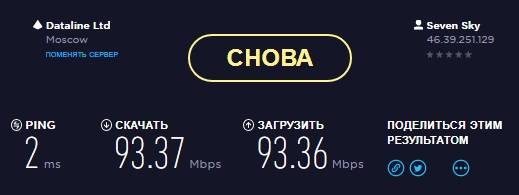
The fact is that many advisors (which I mentioned above) probably happily believe that a router is a magic device like a keyboard, I put it in, stuck it, and you rejoice, they say, of all the business and functions there — once, twice — and . In fact, it is not.
Many people forget (or do not know) that this box itself is, relatively speaking, an almost full-fledged computer, with its processor, RAM and operating system, and all of this determines the final quality (performance, stability, functions), because each of the elements of the filling of the router has its own characteristics.
In this regard, by the way, the one is also able to heat up, hang, reboot and suffer other typical computer diseases caused by poor-quality filling and cheap execution.
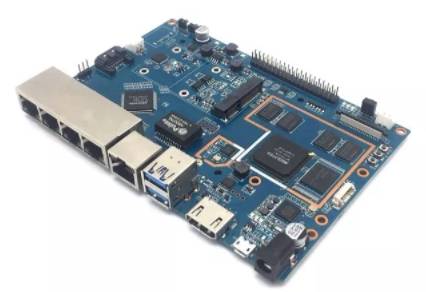
You do not buy the cheapest computer for games? Obviously, as a rule, if you do not assemble yourself, then it will weakly pull the toys, and they will slow down on it, or even not run at all. It is the same with routers, i.e. how to choose a router you need to understand and do it wisely.
Someone might say that, they say, compare full-weighted 3D- applications and distribution of the Internet - it is strange and inappropriate. In fact, it is appropriate to do a little more than completely, because it not only performs the "mythical" distribution of the Internet between computers, but operates with a very substantial amount of data using encrypted protocols, sending, analyzing a bunch of packets and connections, protecting you from attacks due to the built-in firewall handing out Wi-Fi on encrypted connections (and the device’s capacity goes to any encryption) and doing other important things.
In short, a device with a weak filling will easily create thousands of problems for you, the most unpleasant of which are:
- Low speed (as they say, "the router cuts the speed"), i.e. instead of, say, declared at the rate of 10 0/100 Mbit / s both ways (upload / download), it gives out 70 /34 Mbit / s. And the fault in this is not the provider, but the hardware device;
- Constant freezes, reboots, disconnection. Especially true when working with
- Low speed Wi-Fi and a small coverage area (there have been cases in my practice where people simply could not use Wi-Fii.e. signal strength was not enough to cover more than one room);
- Weak protection against viruses, intrusions and other things, because cheap routers rarely have good ones;
- The absence of any interesting and useful functions, such as connecting a flash drive, network printer, support DDNSand other joys of life.
And so on and so forth. In general, in the direction of my verbiage, let's move on to recommendations on how to choose a router so that it does not bother you.
The points go through the main criteria when choosing.
How to choose a router, - the first step, - reviews about the device
The most important and most important criterion, after the characteristics, are the reviews and only they. That is, you choose an interesting model of the router, click on the link, enter the name of the device, and then read the reviews for a long time and persistently. They, as a rule, clearly indicate any disadvantages and advantages of the device.
If you want to know more, want to learn it professionally and understand what is happening, then.
- The first thing you should pay attention to is the mention of the fact that it "cuts" the speed. As a rule, they don’t say about high-quality routers of such words, or if they do, they rarely (often, not very experienced users make one), but really little devices write at once and very much;
- The second thing you should pay attention to is the stability of work, that is, if they write that the router hangs up, reboots or cuts off speed, then it is obvious that its filling simply does not cope with the load, which means that the device is far from ideal and you will have a lot of problems with it;
- The third thing you should pay attention to is working with torrents. In fact, this point follows from the first two, and if people write that the router hangs when launching torrents, then, in general, everything is clear with it - weak stuffing, and the like;
- The fourth thing worth paying attention to is work Wi-Fi-connections. As a rule, they write about the speed and coverage area with a certain number of devices. Here it is important to understand that the power given by the router and the signal received by the device is various, ie the router can give full speed in 100Mb / s, but the device does not receive it more than 20Mb / s.
And, of course, see how many reviews for this or that side, as well as how many times the buttons are pressed " Yes" or " Not"under this review (the example below is clickable). This is the first criterion of how to choose a router.
![]()
The easiest way is to take a piece of paper, write out in two columns the pros and cons, and then looking at the reviews place a pencil with the mark, how many times are mentioned, how many times are mentioned another.
BUT! Always keep in mind that reviews can be bought, paid and so on. There were also such cases that you buy a device, and there is a piece of paper inside, they say, leave positive feedback with 5+++ on Yandex.Market and get 100 steering wheel on the phone. Sadly, many are underway and, yes, they get their silver coins, but ... It hurts those who buy (that is, the rest), relying only on reviews. Therefore, we go ahead and talk about a much more important thing - characteristics.
Second, - technical characteristics
As I said, a router, in a sense, is a small computer that also has RAM, a processor, and other things. On this, you need to pay attention first of all. But since cunning marketers hide this information, we must be able to look for it:
- The best search engines search for [" model name "+ word" specifications"], i.e., for example," "(without quotes);
- And then look at the English-language sites (best of all, it is the device manufacturers), since, as a rule, often correct the filling is indicated exactly there;
- There are also amateur tables for several manufacturers, but they should be avoided. In extreme cases, look for, because reviewers are responsible for what they write, not only in front of you, but also the advertiser, manufacturer, and so on.
As for specific characteristics, we are primarily interested in three characteristics, namely Ram, CPU and FLASH. They look like this:
This is what is called the stuffing (about the rest below), where ROM is so called FLASH-memory, which also plays an important role, along with the processor and random-access memory (RAM). It is clear that the more the better, but ..
However, in order not to tell painful details, I note that in the modern world and with modern technologies, I would not recommended to choose devices with the amount of RAM (RAM) not less 64 MB (better from 128 and more), processor is not weaker 300 MHz (better, again, more powerful, for example 500 and more) and FLASH-by memory of 16 (ideally from 32 MB).

Among other characteristics, i.e., as regards not only the filling itself, but also the "periphery":
- If you is critical coverage area Wi-Fi, then pay attention to the number of antennas - as minimum (!!!) there should be two of them (better 3 and more);
- If speed is important to you Wi-Fi and the quality (stability) of the connection, as well as “breaking through” the walls with a signal, the antennas should be only and exclusively external (not internal), that is, to stick out of the case;
- If it is important to you everything the above and the number of wireless devices that the router can simultaneously support at full speed, then the power of its (router) transmitter and / or antennas (usually indicated in units dBM) must be at least (total) 15 dBM and the more this value is, the better, faster and more (if you can put it that way) you will receive wireless communication.
The information below was also attributed to the characteristics that are important for selection, but let's break it down into subsections for clarity. Moreover, from the point of view of the ideology of how to choose a router, these are different things.
How to choose a router, step three, - protocol support
If we talk about wired communication (this is how the Internet comes to your apartment), then providers now use a variety of protocols to provide Internet services, and therefore it is worthwhile to pay attention to whether your device supports them. First of all, you should ask your operator what exactly he uses.
Generally speaking, those providers that are larger and more powerful, as a rule, give the Internet through PPTP or L2TP. Who is smaller - PPPoE. Needless to say, somewhere still remained ADSL-protocol, which is the Internet through the telephone network. Well, for those to whom any provider has not yet dragged their networks onto the web, router support may be important. 2G / 3G / 4G / 5G modems (yes, and it happens), especially if you want to make the Internet with Wi-Fi somewhere in the country.
Special attention should be paid to L2TPbecause This standard is not supported by every router. By the way, routers that support this protocol are usually more or less and the most powerful / adequate (but not always, see the section on features).
So, it is important for you that either your protocol is supported (call, write or search on your Internet users' website), or as many of them as possible. A severe minimum is:
- PPT2P;
- L2TP;
- Ppoe.
The rest, according to circumstances and needs, to whom what and why. This, with regard to, again, wired connection, which, one way or another, is usually provided by your operator (although G / 3G / 4G / 5G it also relates).
Fourth, Wi-Fi encryption and standards
As for the standard Wi-Fi, there is no link to the provider itself, because the wireless connection is handled by the device you choose. Now there are, conditionally, two gradations in the frequency of the network Wi-Figenerated by the router is:
- 2.4 GHz;
- 5 GHz.
The first option is the oldest networks and they are (used) now literally everywhere. But the transition to a new frequency range is in full swing (second, i.e. 5 GHz), which, firstly, is less cluttered with a large number of devices (receiving and distributing), secondly, by itself faster and supports more channels. Thinking about how to choose a router, I would recommend, at a minimum, choosing the router that supports both these range.
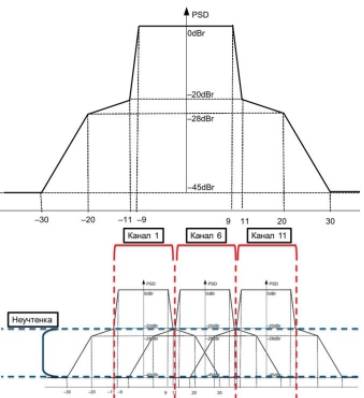
Buy devices only with 5 GHz for now (at the time of updating the article) not it makes sense, more precisely, before buying, it is worth making sure that the "receiver" (consumer) of the signal, ie the laptop-phone-tablet and etc., supports this range and is equipped, in fact, with a module that can work on it. 2.4 GHzif support is stated Wi-Fi, now everyone has it. But the five - no.
In more detail about the clutter, channels, etc., I, therefore, on how to choose a router based on the channel, I think, you will understand. Well, or how to check your choice in fact (or before)
Regarding the speed characteristics, there is a gradation according to the standard IEEE 802.11. In short, IEEE 802.11 - a set of communication standards for communication in a wireless LAN network area of frequency bands. It (standard) determines the speed, the range of frequencies and TP, and has a gradation of letters, depending on the novelty.
Ideally, today, the router should support:
- 802.11a;
- 802.11b;
- 802.11g;
- 802.11n;
- 802.11ac.
More about IEEE, as well as these and other letters, you can.
Further. In addition to the frequency ranges Wi-Fithere is another concept encryption and it is not always the case that the router and the receiving device support the same encryption protocols, so there may be problems with the connection and, more importantly, security. Therefore, when choosing, try to take maximum support for encryption protocols, namely, from common categories:
- WEP;
- WPA and WPA2;
- WPS / QSS.
Briefly with Wi-Fi sorted out. I repeat that about the range of coverage and TP, I wrote in the characteristics, is the number of antennas, the power of antennas and TP.
How to choose a router, step five, - firmware
Each router (and, generally speaking, conditionally speaking, a device) has a so-called firmware, that is, special software that controls it. From this very firmware depends on the speed, security, usability, customization, support for languages, punctures and many other characteristics.
Here you can write a lot and for a long time, but, briefly, the firmware comes with or without errors, successful, unsuccessful, buggy, fast, slow, official, alternative, and so on.
About how to choose a router based on the firmware and their differences, you can generally write for years, but we are now interested in specific facts that will help us make the right choice. Therefore, what should be done:
- When you have already more or less decided on the model, you should go to the manufacturer’s website ( ASUS, Zyxel, DLink, Cisco, Xiaomi, Trendnet or who else you chose there) and see, first, the presence of a section with firmware;
- Secondly, in fact, how long have these firmware been updated () and are they updated at all;
- Search the Internet for " alternative firmware + model name" or " custom firmware + model name", eg: " custom firmware "(without quotes).
How to take off with this? If there are several firmwares and the last one was not so long ago (at least a year ago), it means that the model is supported and developed by the manufacturer. If there are alternative firmware, it means that the model is at least not bad, since one of the enthusiasts writes its firmware (router model), which, by the way, is usually faster, more convenient and more.
Well, the last thing is not the most important thing yet.
Sixth, the appearance and body
The last, but not the least important factor is the execution of the hull. The appearance is very different, just as unpretentious, so everyone can understand for himself how to choose a router and which one (visually) he needs more:
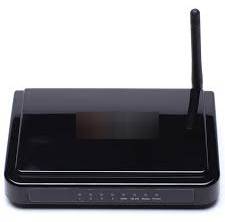
So cute:

Pathetic:

Frightening:
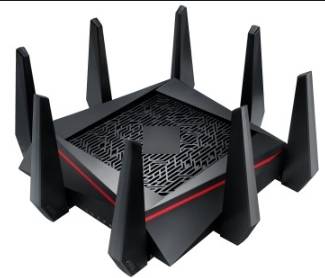
And so on. At this point, there is something in which is much, and, in this respect (since the taste and color, all the markers are different), I will not advise you anything, except perhaps two things, namely:
- Pay attention to the number of slots for the heat sink (some models have a peculiarity to overheat, because of what they slow down, turn off, reboot and so on);
- The presence of fasteners on the wall (if it is important to you).
Here is a simple example of a good heat sink, but the absence of fasteners:

Well, in general, of course, the choice is always worth making, based on needs, because if you just need to distribute the Internet at any speed to other computers, then in general, the simplest stable and inexpensive model will suffice.
The selection criterion is useless, - the manufacturer
Whatever anyone may say, but most stupid The criterion is the choice, relying on the manufacturer. Even the worst of them have met decent models that live for centuries and work quickly, like the best of them, there are frankly unsuccessful or just marketing solutions (just to fill your pocket). Therefore, trying to understand how to choose a router should not look at the name.
To argue about the brand is nonsense. The most important quality characteristics, be it technical, firmware and / or other, that is, read above (and below in the text) and choose wisely, and not by the name of some brand that someone successfully tries to sell you. And yes, do not forget that " Every frog praises its swamp"(c) - so use your brain. Own.
And so .. Thousands of them - ASUS, Xiaomi, TP-LINK, D-Link, Ubiquiti, MikroTik, NetGear, Zyxel, Upvel, EnGenius, Huawei, Netis, TRENDnet, HP, Edimax, LevelOne, Tenda, Apple, LigoWave, LinkSys, Cisco, ZTE and others. Now it doesn’t really make it lazy.
Where is the best place to buy a router?
- , - for those who are not afraid to buy abroad and save money;
- , - perhaps the best choice in terms of price-quality ratio. Quite distinct prices, although the range is not always perfect in terms of diversity. The key advantage is a guarantee that really allows for 14 days to change the product without any questions, and even in case of warranty problems the store will be on your side and help solve any problems. The author of the site has been using it for years. 10 minimum (since the time when they were part of Ultra electoronics), which also advises you. If you do not know what to choose, then (at least with 3 antennas, if you do not understand anything from the text above;));
- , - a huge assortment and choice of anything, although prices are not counted once in a while. The key advantage is a large coverage of the delivery zone in Russia, that is, you can actually place an order anywhere, which sometimes helps a lot (especially in cities where you will not find some positions during the day with fire);
- , - one of the oldest stores on the market, as the company exists somewhere order 20 years old. A decent selection, average prices and one of the most convenient sites. In general, a pleasure to work.
The choice is traditionally yours. Of course, everyone there Yandex Market"No one’s canceled, but I would recommend these, but not some of them, from good stores M Video and other large networks (which are often not just expensive, but are detrimental in terms of quality of service, warranty work, etc.).
Afterword
Something like that. I hope that now you understand how to choose a router, what to look at when choosing, and everything else. By the way, if you do not know which model to choose, then we recommend to look at our reviews of models of routers (simpler), and (more expensive, but for centuries), and there are a lot of them, too.
It goes without saying that the idea of additional functionality and bells and whistles, such as built-in support for torrents, remote access and a heap of something else, is not mentioned here, but this is not something that can be attributed to the main nuances and topic of the material.
I suppose that there will be a lot of questions, comments, debaters and all such other things, and therefore write in the comments, and I will be happy to read about your experience, answer your questions and just talk on this topic. Write;)
If you want to create a full-fledged home network, wired and wireless, at home, then you cannot do without the right choice and purchase of a Wi-Fi router.
The fact is that it is the Wi-Fi router (router) that allows several devices (computer, laptop, any gadget) to connect to the same network automatically distributing their unique IP addresses to them.
Even neighbors can connect to your wireless Wi-Fi network if you open access to it. 
But the fact is that choosing a Wi-Fi router is not easy. As a rule, the future owners of this device go in two ways:
- Without wasting time choosing a router, according to the advice of friends, they acquire an already proven model;
- Carefully examine all the features of the router, estimate how much they will be useful for them, and then make a purchase.
In the first case, spend little time, but as a rule, a lot of money. In the second case, a lot of time, but you can save a lot.
In the first case, you can become the owner of an expensive device with a huge number of functions, most of which you do not need.
In the second case, you amuse yourself with the thought that you acquired what you wanted without overpaying.
Our market is literally crammed with Wi-Fi routers, to list the name of models that can be watched, and their price range is very different. And about the characteristics and capabilities of these devices, more than one book has been written.

Therefore, it is not surprising that in the process of choosing a Wi-Fi router it is not difficult to get confused and make a wrong purchase.
In this article we will try to reveal all the details of the correct choice of Wi-Fi router, knowing that you will partially become an expert in this field.
Criterias of choice
The first thing you need to know is that by what criteria the choice of router is made, let's list them:
- Stability and reliability in work;
- Wireless coverage;
- The speed of sending and receiving data;
- The ability to support different data transfer protocols, as well as their standards;
- Availability of necessary ports, as well as their number;
- Thoughtful and intuitive interface;
- The presence of the installation CD with software;
- Easy installation and configuration;
- The possibility of expanding the coverage of a Wi-Fi signal by installing additional antennas;
- The presence of the site from the manufacturer, where there is technical support, driver and software updates;
- Cost;
- The presence of other specific features that are necessary for a particular job.
Stability and reliability in work
The main disadvantage of most models of Wi-Fi routers, is their periodic freeze.
This problem is solved simply, you need to disconnect the router from the network for 2 minutes and then re-enable it.
When the device is disconnected from the network, it will restart, but you will not have the Internet either. And if the movie rocks?
Agree, this tap is not convenient in work, even if such a deficiency manifests itself very rarely - once a week or a month.
About the fact that it is possible that the selected model will hang, you will not find anywhere in the description, except in the reviews on the forums, which may also differ.
Not stable operation of the router and its periodic freezing occurs for the following reasons:
- The device for months does not turn off from the network and there is a constant download of information of large volumes, as a result of which microchips may overheat;
- Not high-quality or not perfect firmware device. It is important to "name" of the manufacturer, as well-known companies constantly come out with firmware and software updates.
Therefore, in order to avoid such problems, do not look closely at cheap devices, start to “dance” at least from average prices.
But if such problems still arise, you can try to upgrade the router, for example, with firmware such as DD-WRT, which is considered to be more stable in operation.
But if you do not understand this, and there are no people who would professionally do everything for you, then it’s better to put up with the problem, otherwise just take the device out of working condition.

On each router model, another firmware may behave differently, and the fact that it worked on one device will destroy the other.
The stability of the router, this is a relative indicator, which is indirectly affected by other selection criteria, which we will discuss later.
Speed
Who does not like speed? Most people love it, especially when it comes to the Internet.
But know, not all the numbers that are specified in the characteristics of Wi-Fi routers need to be believed.
For example, the figure of 150 Mbit / s says that theoretically you can squeeze out of this model for wireless communications speed of about 18 MB per second. But in practice, for many reasons, the speed will be no more than 12 MB per second, i.e. 100 Mbit.
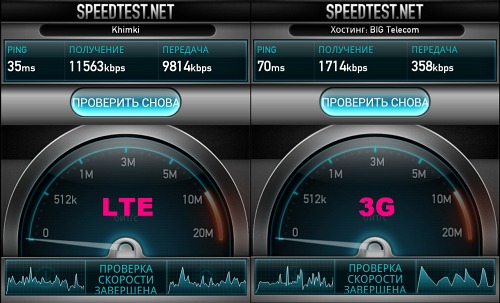
Although this is enough for the home, the main thing is that the provider provides such speed and your computer or laptop supports it.
When choosing a Wi-Fi router, also pay attention to the speed of LAN ports, these are places where network cables are inserted, their speed standard is 12 MB per second or 100 Mbps.
But for some models that are not cheap, you can see the figure of 1000 Mbps, which gives the user a speed of 120 MB per second. The figure is amazing, but do you need it? Do you have hundreds of terabytes of information on your computer that you need to quickly transfer? Hardly.
Such routers are considered to be professional and it is not advisable to use them at home, and therefore you should not overpay.
About this nuance you do not tell in the store.
It should be understood that if the provider has connected a dedicated line of the Internet at 100 Mbps to your apartment, then if you connect it directly to a computer or other device, most likely 100 Mbps will be (much depends on the line load).
In the case of a Wi-Fi router, the main wire, usually a twisted pair, will enter the main LAN port, and then we will branch the network through and also through a wireless connection.

So, at the output you will not see 100 Mbit / s claimed by the provider, and at best 95 or 90. But there is nothing terrible, you will hardly feel these losses against the background of a 12 MB channel per second.

Just know that there is such an indicator. For each model of the router it may be different. Only the manufacturer knows the real numbers, and experiment lovers will recognize them as a result of tests that can be read on the forums.
But we believe that you just need to take note of this and that’s it. This does not affect the overall situation, compared with the opening possibilities when connecting a Wi-Fi router at home.
Virtually any modern router stably covers a radius of 50 meters. In any classic 2-3 room apartment, the connection will be stable and uninterrupted, and even the neighbors will be able to use your Internet if you want.
If you choose a Wi-Fi router for a mini-hotel or for a private house, then pay attention to the 3 antenna devices, the radius of coverage of the territory will be greater while the stability of data transmission will be better.
If you ask for a specific Wi-Fi coverage figure, no one will tell you. There are situations when the Internet can be accessed today 300 meters from home, and tomorrow only from 100 meters from the access point.
Outside the city, this distance can be increased to 500 meters, and in the city in the industrial zone reduced to 50 meters as a result of increased electromagnetic background.
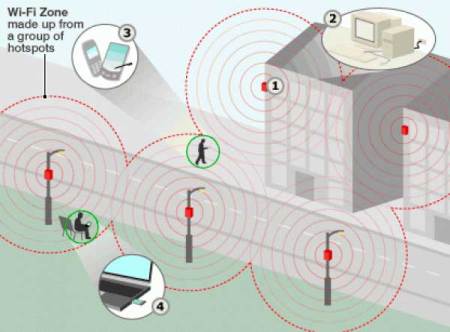
Signal strength is also influenced by weather conditions, air humidity, rain, snow, etc.
USB port
On some models of routers you can watch the USB port. Its purpose may be different:
- Connecting various USB devices (printer, scanner, flash drive) to share them over the network;
Therefore, when choosing a Wi-Fi router, you need to clarify what the USB port is for, as there is a chance to purchase a 3G router, which is also a good thing, but you don’t connect anything to a 3G modem.
Other characteristics are similar to each other with a regular router, so if this is not important for you and the price suits you, then you can take a 3G router.

IPTV-TV service is when video and audio signals are transmitted via the Internet protocol. The same TV, only through the Internet.
This service abroad has been around for a long time, for example, in Germany, in cities, people do not even know what antennas are.
The IGMP designation indicates that this router supports IPTV-TV service, but you need to understand that your service provider must also provide this service, otherwise it makes no sense to buy such a router.

Provider
We gradually approached the question of how much the provider influences the choice of a Wi-Fi router.
The specific model of the router for different providers may work differently, so before making a choice, contact the technical department of your Internet service provider and it is desirable that you already have all the main characteristics of the device.
Indicating them to the representative of the technical department you can get an answer, which of them are relevant and even then draw conclusions. This also applies to IPTV television.
Fortunately, now on the Internet you can find all the features on any model of Wi-Fi routers.
If there are several providers in the queue for you, then it is possible to choose the best one.
Issue price
Cost is one of the main criteria for choosing not only a router, but also any other product.
But buyers are also different. Some chase only the characteristics, others are important design, others want to find a middle ground.
But in all cases, the buyer first pays attention to the price.
To make it clear, take a range of prices and see what the most high-quality devices we can get in these chapels.
Up to 1500 rubles
Unfortunately, due to the appreciation of the dollar, it makes no sense to pay attention to the lower price, because what cost 500 rubles in April 2014 now costs at least 1,000.
In this price range, you will be able to meet devices from little-known brands that are just entering the market, as well as routers of the lower price segment from already well-known global manufacturers.
For example, the simplest model D-Link DAP-1360 costs up to 1200 rubles for December 2014, and you should not expect any serious characteristics from it.
With this router, you can create a small, only wireless Wi-Fi network.
About the wired network we are not talking here, since the number of LAN-ports in this model is limited to one.
A better version of the Tenda W308R, which now costs about 1,500 rubles, but you already get 4 LAN ports, two antennas and other essential features.


If you have 1 computer and one laptop at home, and you are on a low-cost tariff of up to 50 Mbps, then such devices are quite suitable for your case.
From 1500 to 3000 rubles
This price range most attracts buyers, because for a very reasonable price you can buy a decent machine.
For example, for 1800 rubles you can buy not a bad option -.
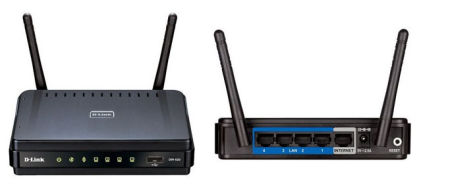
One input and 4 output ports, two antennas, USB 2.0 port type A, the presence of a torrent client.
All specifications can be viewed below.
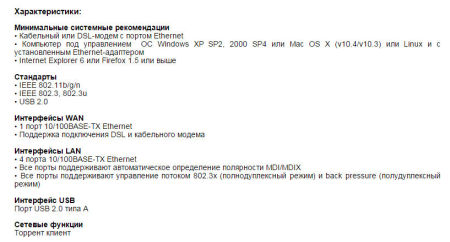

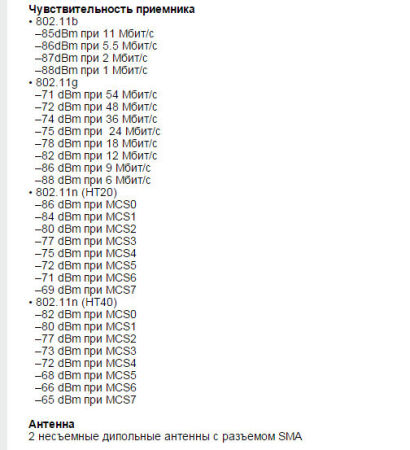
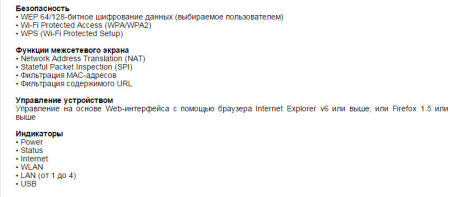

However, despite the large list of features of this model, all new models from D-LINK are characterized by unstable operation of the firmware.
In many cases, users have to re-ask a model from - D-Link.
More robust in this regard are Wi-Fi routers from TP-LINK, for example, the TP-Link TL-WR841N model, which currently costs around 1600 rubles.



Not bad models produced by Asus. Among them are models with an interesting design.
Up to 3000 rubles at the moment, you can pay attention to the model Asus RT-N12, Asus RT-N10U B1, Asus RT-N10U and Asus DSL-N10. These are already time-tested devices.
There are still not proven, which only appear.
Asus RT-N11P - port speed up to 300 Mbps.

In most models of routers up to 3000 rubles, two antennas are already going, with the exception of routers from Asus, where another 50% are one antenna, 50% are two.
Two antennas, of course, give a number of advantages both in speed and in signal transmission stability.
Pay attention to the models where you can add antennas, if necessary, you can increase the signal.
Spending money is not difficult, it is difficult to spend it correctly. Therefore, when choosing a Wi-Fi router in this price range, try to proceed from the characteristics of the device, and not from its design, for which you also pay.
After all, for one and the same price, you can buy two completely different devices in terms of parameters, but one will be beautiful and the other more functional, but less attractive, you will have to sacrifice something here.
From 3000 rubles and above
It is necessary to understand that, being guided by the given prices, you should already understand many functions of routers, otherwise you will get a cat in a bag.
Routers in this price range fall into two categories:
- Universal;
- Specialized (professional).
Universal devices
A versatile expensive Wi-Fi router for many years to come will save you from thinking to improve anything in your home or office wireless network.
For example, take the model TL-WDR3600.

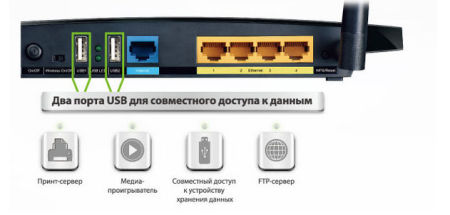
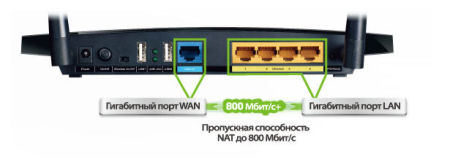
Full specifications TL-WDR3600.


Or for example the model ZyXEL Keenetic Omni.
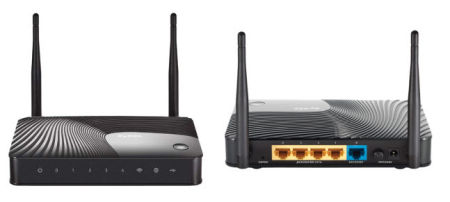
Or the Asus RT-N66U model.
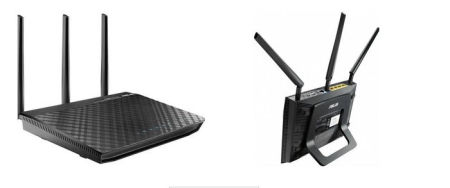

These routers have all the necessary functions to create a full-featured modern wireless Wi-Fi network at home.
In addition, they have a number of additional functions, for example, the use of network storage via USB port, support for IPTV, etc.
Focused
Such devices are hardly suitable for home use. Most likely they will be of interest not to large enterprises, provider companies, firms where high data transfer speed, increased resistance to interference and the ability to connect a large number of devices are important.
Here, Cisco, Mikrotik and others have become leaders.
For example, Mikrotik manufactures RouterBOARD series routers, as an example, you can bring a model.
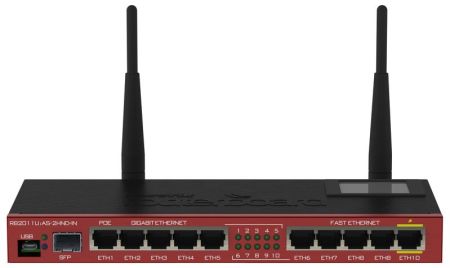
Below are the characteristics of the RB2011UiAS-2HnD-IN.
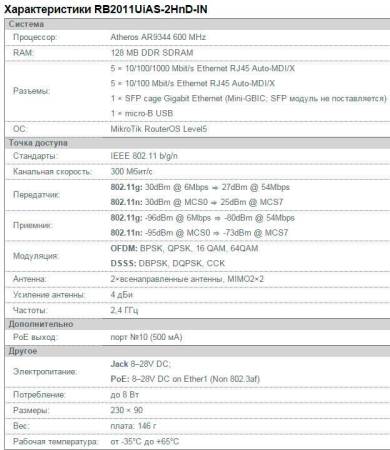
Working frequency range
Most modern Wi-Fi routers operate at frequencies up to 5 GHz.
If you live in a large industrial city, where in a small space you can find a huge number of wireless Wi-Fi networks, then you should think about purchasing a device operating at a frequency of 5 GHz, since this band is not very popular yet, which means your network will work perfectly .
For example, the Asus RT-N66U router mentioned above, which operates at 2.4 and 5 GHz, operates at this frequency.
Summing up
Summing up, we can say that the choice of a Wi-Fi router is not a simple event that requires a serious approach. On the move, such a device can not be bought home.
It is necessary to clarify the capabilities of the providers and compare them with the capabilities of the router, think about what kind of wireless network you want to have at home and what it will be like in the future.
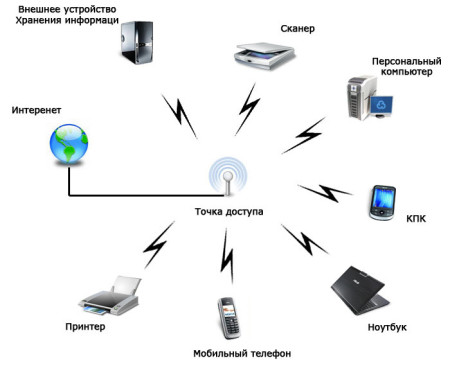
Decide on the number of connected devices, which will be connected through the wires, and which are not.
By purchasing an inexpensive device, you run the risk of getting unstable connection with a small coverage, not getting the features that you would like to have from a Wi-Fi network.
When you buy an expensive universal router, you will certainly get even more than expected, but this will please you only if you don’t feel sorry for a couple thousand of wasted money.
Other features of the choice of Wi Fi router.
Therefore, choose a middle ground, and we hope that the information obtained in this article will help you find it. Good luck.
